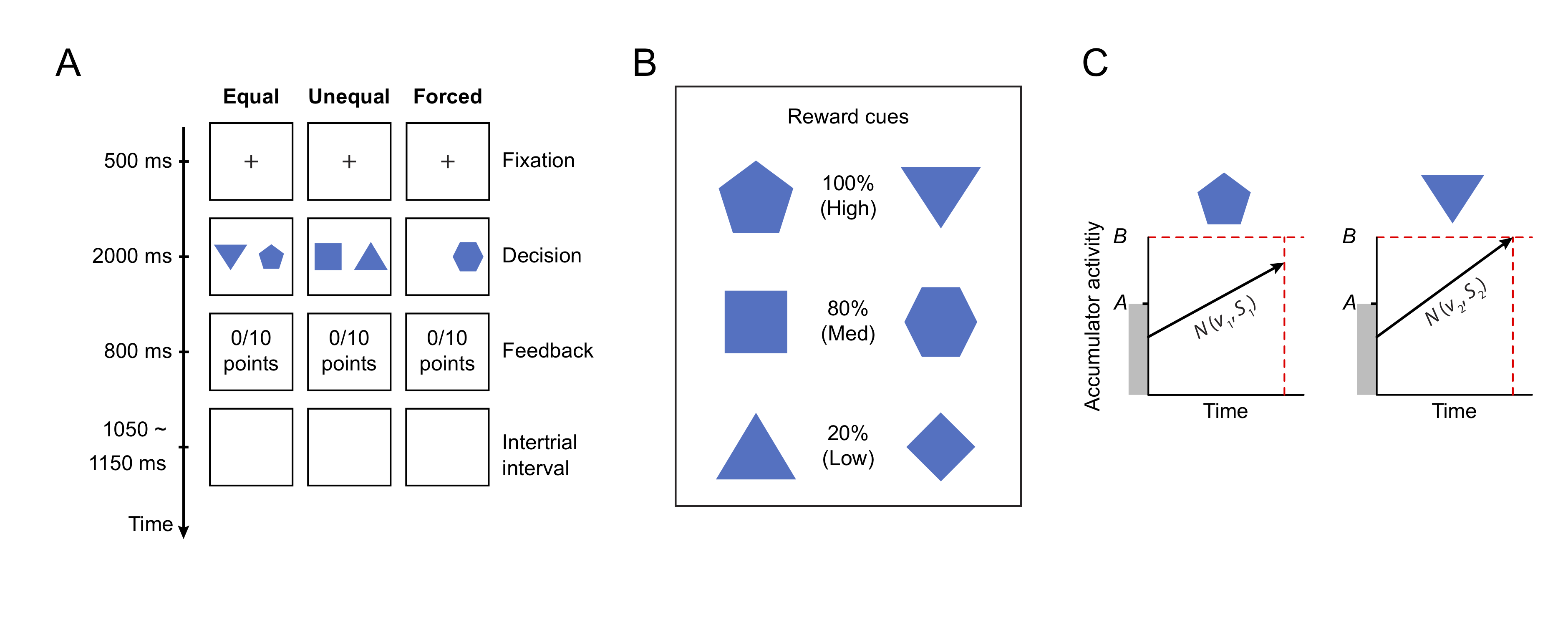How do we make choices between equal options?
A new paper led by Wojciech Zajkowski and Dominik Krezeminski is published on Computational Brain & Behavior. This study examined the neurocognitive processes underlying such voluntary decisions by integrating cognitive modelling of behavioral responses and EEG recordings in a probabilistic reward task. Human participants performed binary choices between pairs of unambiguous cues associated with identical reward probabilities at different levels. Higher reward probability accelerated RT, and participants chose one cue faster and more frequent over the other at each probability level. The behavioral effects on RT persisted in simple reactions to single cues. By using hierarchical Bayesian parameter estimation for an accumulator model, we showed that the probability and preference effects were independently associated with changes in the speed of evidence accumulation, but not with visual encoding or motor execution latencies. Time-resolved MVPA of EEG-evoked responses identified significant representations of reward certainty and preference as early as 120 ms after stimulus onset, with spatial relevance patterns maximal in middle central and parietal electrodes. Furthermore, EEG-informed computational modelling showed that the rate of change between N100 and P300 event-related potentials modulated accumulation rates on a trial-by-trial basis. Our findings suggest that reward probability and spontaneous preference collectively shape voluntary decisions between equal options, providing a mechanism to prevent indecision or random behavior.
The paper is now available online.

